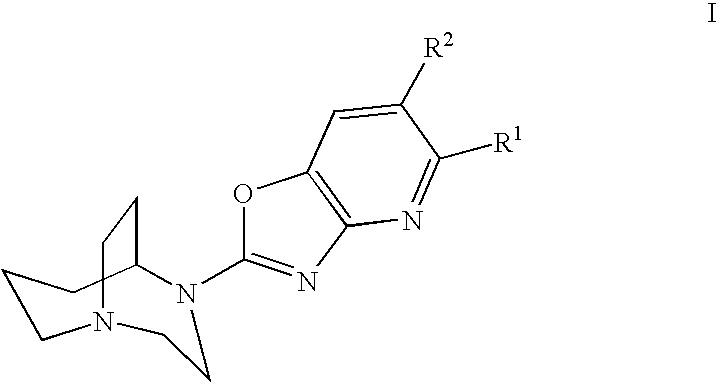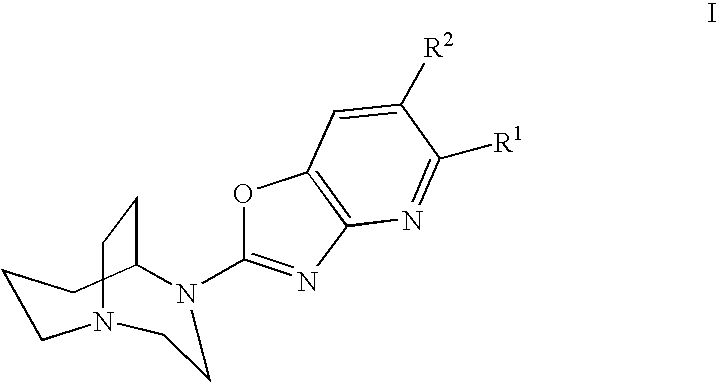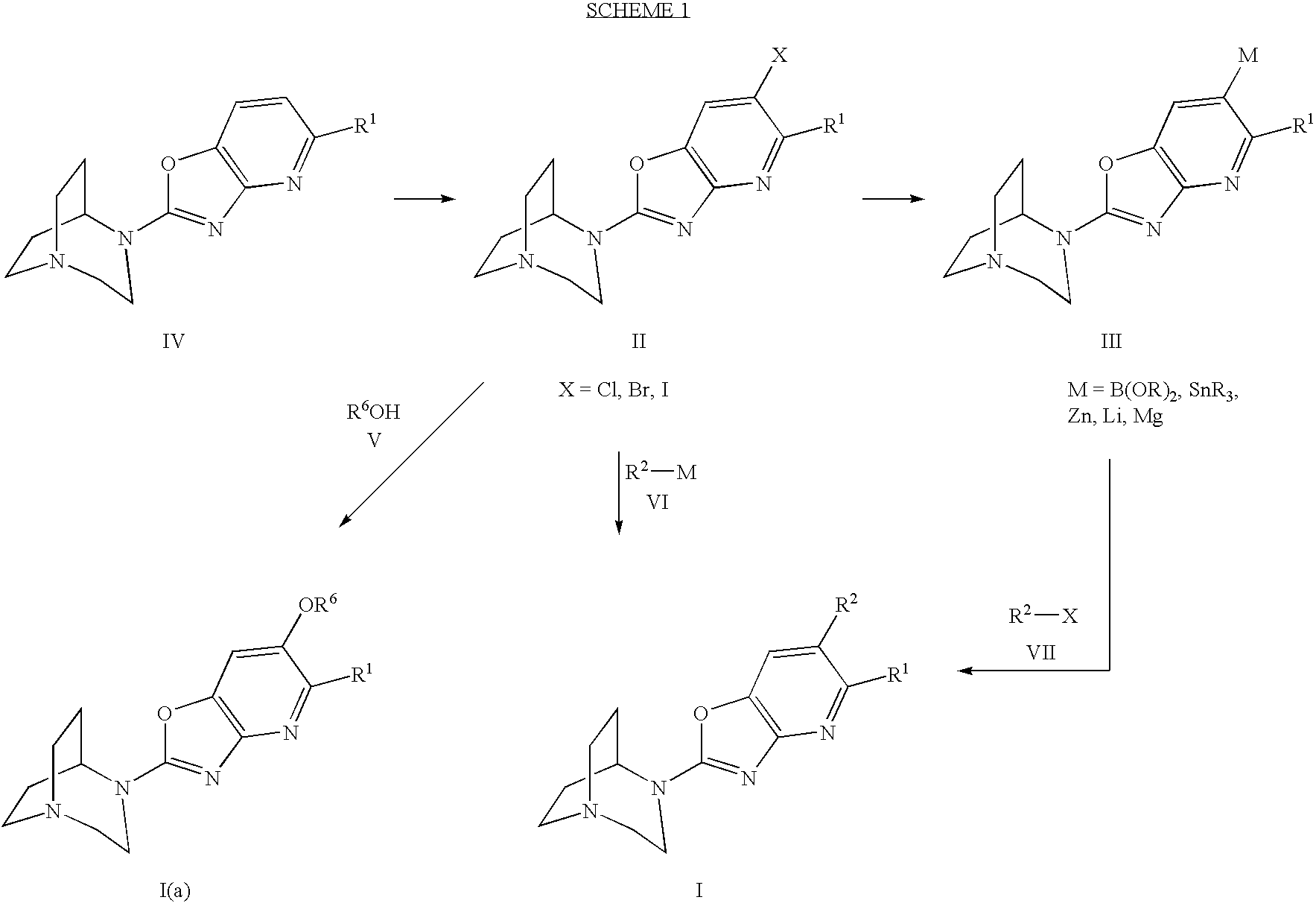Azabenzoxazoles for the treatment of CNS disorders
a technology of cns disorders and azabenzoxazole, which is applied in the direction of antibacterial agents, immunological disorders, metabolism disorders, etc., can solve the problems of low ratio between efficacy and safety, not all activities are desirable, and the utility of clozapine as a drug is greatly limited, so as to reduce the amount of antipsychotics required
- Summary
- Abstract
- Description
- Claims
- Application Information
AI Technical Summary
Benefits of technology
Problems solved by technology
Method used
Image
Examples
example 1
4-(6-Bromo-5-methyloxazolo[4,5-b]pyridin-2-yl)-1,4-diaza-bicyclo[3.2.2]nonane
[0140] A flask, equipped with a magnetic stirring bar, was charged with 4-(5-methyloxazolo[4,5-b]pyridin-2-yl)-1,4-diaza-bicyclo[3.2.2]nonane (1.0 g, 3.02 mmol), as described in EP 1219622 A2, sodium acetate (3.15 g, 36.1 mmol), and 50% AcOH aqueous solution (40 mL). The flask was purged with nitrogen and closed and the mixture was stirred at room temperature to form a homogeneous solution. Then / Br2 (170 uL, 3.2 mmol) was added dropwise and the mixture was stirred for 15 min (LCMS showed incomplete conversion). Additional bromine (75 uL, 1.45 mmol) was added and stirred 10 min (LCMS showed starting material was gone). The mixture was cooled with an ice bath and basified with 12 N NaOH to pH 14. The mixture was then extracted with 5% CH2Cl2 in methanol three times and the extract was dried over MgSO4 and evaporated to give 720 mg of 4-(6-bromo-5-methyloxazolo[4,5-b]pyridin-2-yl)-1,4-diaza-bicyclo[3.2.2]nona...
example 2
4-(6-Bromo-5-ethyl-oxazolo[4,5-b]pyridin-2-yl)-1,4-diaza-bicyclo[3.2.2]nonane
[0142] LC-MS for C15H19BrN4O: retention time 1.4 min, m / z 353.0 (M+H)+.
example 3
4-(5,6-Dimethyloxazolo[4,5-b]pyridin-2-yl)-1,4-diaza-bicyclo[3.2.2]nonane
[0143] A microwave reactor tube (Smith Process Vial), equipped with a magnetic stirring bar, was charged under nitrogen with 4-(6-bromo-5-methyloxazolo[4,5-b]pyridin-2-yl)-1,4-diaza-bicyclo[3.2.2]nonane hydrochloride (100 mg, 0.3 mmol), Pd(dppf)2Cl2.CH2Cl2 (5 mg, 0.006 mmol), 2 mL of anhydrous dioxane, and ZnMe2 (0.3 mL of 2M solution in toluene, 0.6 mmol). The vial was flushed with nitrogen, sealed, and heated to 150° C. for 15 minutes in a microwave reactor (Smithcreator of Personal Chemistry). The mixture was diluted with 3 mL of MeOH, filtered through celite, and celite cake was washed with 3 mL of MeOH. The clear solution was evaporated and the residue was purified by flash chromatography (silica gel, 5% to 10% MeOH in CH2Cl2 with 1% NH4OH) to give 4-(5,6-dimethyloxazolo[4,5-b]pyridin-2-yl)-1,4-diaza-bicyclo[3.2.2]nonane. The product was dissolved in 0.5 mL of MeOH, then 0.5 mL of 2M HCl in ether was adde...
PUM
| Property | Measurement | Unit |
|---|---|---|
| temperature | aaaaa | aaaaa |
| temperature | aaaaa | aaaaa |
| temperature | aaaaa | aaaaa |
Abstract
Description
Claims
Application Information
 Login to View More
Login to View More - R&D
- Intellectual Property
- Life Sciences
- Materials
- Tech Scout
- Unparalleled Data Quality
- Higher Quality Content
- 60% Fewer Hallucinations
Browse by: Latest US Patents, China's latest patents, Technical Efficacy Thesaurus, Application Domain, Technology Topic, Popular Technical Reports.
© 2025 PatSnap. All rights reserved.Legal|Privacy policy|Modern Slavery Act Transparency Statement|Sitemap|About US| Contact US: help@patsnap.com



